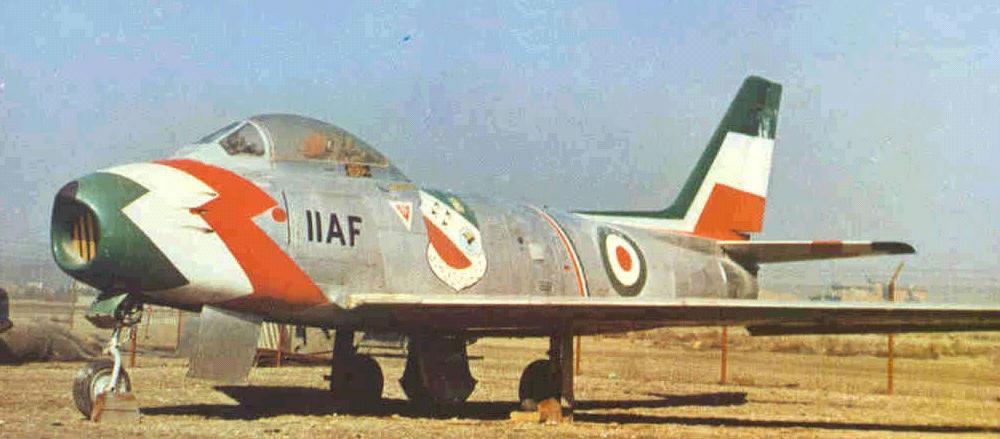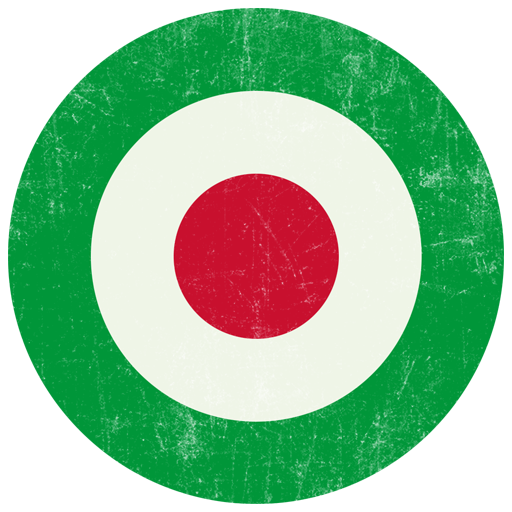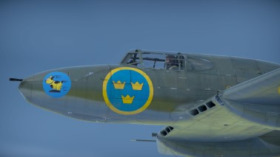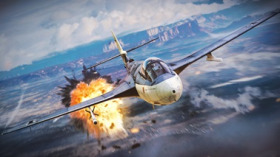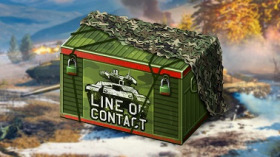
- For PC
- For MAC
- For Linux
- OS: Windows 10 (64 bit)
- Processor: Dual-Core 2.2 GHz
- Memory: 4GB
- Video Card: DirectX 11 level video card: AMD Radeon 77XX / NVIDIA GeForce GTX 660. The minimum supported resolution for the game is 720p.
- Network: Broadband Internet connection
- Hard Drive: 23.1 GB (Minimal client)
- OS: Windows 10/11 (64 bit)
- Processor: Intel Core i5 or Ryzen 5 3600 and better
- Memory: 16 GB and more
- Video Card: DirectX 11 level video card or higher and drivers: Nvidia GeForce 1060 and higher, Radeon RX 570 and higher
- Network: Broadband Internet connection
- Hard Drive: 75.9 GB (Full client)
- OS: Mac OS Big Sur 11.0 or newer
- Processor: Core i5, minimum 2.2GHz (Intel Xeon is not supported)
- Memory: 6 GB
- Video Card: Intel Iris Pro 5200 (Mac), or analog from AMD/Nvidia for Mac. Minimum supported resolution for the game is 720p with Metal support.
- Network: Broadband Internet connection
- Hard Drive: 22.1 GB (Minimal client)
- OS: Mac OS Big Sur 11.0 or newer
- Processor: Core i7 (Intel Xeon is not supported)
- Memory: 8 GB
- Video Card: Radeon Vega II or higher with Metal support.
- Network: Broadband Internet connection
- Hard Drive: 62.2 GB (Full client)
- OS: Most modern 64bit Linux distributions
- Processor: Dual-Core 2.4 GHz
- Memory: 4 GB
- Video Card: NVIDIA 660 with latest proprietary drivers (not older than 6 months) / similar AMD with latest proprietary drivers (not older than 6 months; the minimum supported resolution for the game is 720p) with Vulkan support.
- Network: Broadband Internet connection
- Hard Drive: 22.1 GB (Minimal client)
- OS: Ubuntu 20.04 64bit
- Processor: Intel Core i7
- Memory: 16 GB
- Video Card: NVIDIA 1060 with latest proprietary drivers (not older than 6 months) / similar AMD (Radeon RX 570) with latest proprietary drivers (not older than 6 months) with Vulkan support.
- Network: Broadband Internet connection
- Hard Drive: 62.2 GB (Full client)
F-86 Sabre, Golden Crown Imperial Iranian Air Force
The Imperial Iranian Air Force (IIAF), as it was formerly called, was first established as a branch of the Imperial Iranian Armed forces by the Iranian ruler, Reza Shah, in 1920, in response to the rising importance of aircraft in warfare, and in accordance with Iran’s own modernization. In the years after it was founded, the IIAF used exclusively foreign (European) aircraft, since they lacked the technology to make their own. The first country to accept their request was Germany, followed by France and Russia. However, simply buying the planes wasn’t enough. The first Iranian pilot, Colonel Ahmad Khan Nakhjavan, graduated from flight school in France in 1925. This paved the way for the beginnings of the Iranian air force.
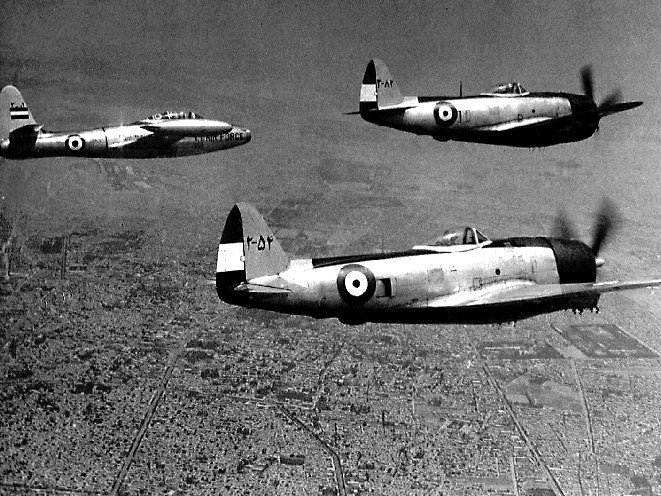 |
| F-84 and two P-47 Thunderbolts formation comparison flight |
During the following years, pilots were trained in France and Russia, and by the onset of WWII, the IIAF had around 400 battle-ready aircraft and pilots to fly them.
By 1941, Iran was a neutral country. They had decided not to participate in the war on either side. However, Britain and the USSR felt that Iran’s trade routes with Germany were an indication of their true allegiance. In an effort to secure valuable oil deposits needed to supply their troops in North Africa, the British and Soviets launched a coordinated surprise attack on Iran, with the former attacking from the Persian Gulf and from Iraq, and the latter from the Caucasus. The Iranian did not have time to prepare for a resistance, and they quickly crumbled under the pressure of the two superpowers.
Even though only 6 Iranian fighters were shot down, they were one of the few which actually made it to the sky. The others were either captured, dismantled, or destroyed, and the IIAF was effectively ruined. Some of those included the Tiger Moth, a local Iranian fighter and trainer, of which there were reportedly 109, and many American Hawkers. An interesting thing to note was also that Reza Shah, with barely 100 hours of flight experience, was regularly flying reconnaissance missions above Iran. This would be the first and possibly last time that the leader of a country personally participated in a war.
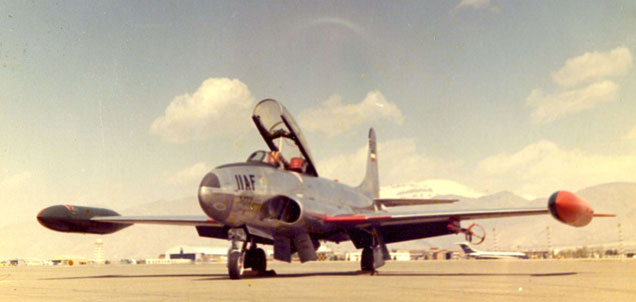 |
| T 33 Shooting Star, Imperial Iranian Air Force |
After the end of World War II, Iran’s government became largely pro-Western, and the US and UK began selling its aircraft to Iran. Though their economy was crippled, Iran still managed to reopen their pilot training schools, as well as purchase new planes for their trainees to use. All the students who entered graduated, and the IIAF was back to becoming a proper airforce. By the 1960’s, the IIAF was once again a modern airforce, with over a hundred F-84s and F-86s (in total). By the 1970’s, the IIAF had a formidable number of modern airplanes, and well-trained pilots to use them. Their main airplanes of choice were the F-14 Tomcat and F-4D Phantom, and by the late 1970’s they were the only airforce in the world other than the US navy to be using F-14s. Jalil Zandi, an F-14 Tomcat pilot, became distinguished in the Iran-Iraq war as not only the best Iranian ace, but also as the best F-14 pilot in the world, with 11 confirmed kills and several more claimed ones.
Author: Sergej “NuclearFoot” Hrustić
With an upcoming update, we will add the Iranian Air Force Roundel to War Thunder:
Decal made by Colin 'Fenris' Muir
See you in the skies
